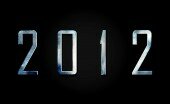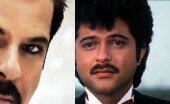True Grit (2010)
Written by Alok // February 16, 2011 // Media & Popular Culture // 6 Comments
In assessing the merits of a “re-make” or “re-interpretation” should we even be comparing two versions of the same film?
Normally I would have said “no”, and in some cases, the “original” and the re-make merit no comparison at all because of vast differences in quality or storyline or both. In this case though, the 1969 version is useful to appreciate the merits of the Coen Brothers’ version (and also understand where it falls short). Make no mistake, I think both are very, very good films and feature some fantastic work but when we’re essentially in Oscar-comparison mode, one has to pick winners and losers.
Strictly speaking, the Coen Brothers’ “True Grit” is not a re-make as it is sometimes made out to be. It is, like its 1969 predecessor starring John Wayne, based on the eponymous Charles Portis’ novel. The story largely follows the novel in both cases, though the Coen Brothers’ version is considered to be truer to the novel’s plotline. Broadly, the movies and book tell the story of 14 year old Hattie Ross, whose father has been murdered in cold blood by outlaw, Tom Chaney and her efforts to bring her father’s killer to justice by hiring US Marshall, Reuben “Rooster” Cogburn to go into the Indian Territories and bring him to justice. Along the way, they are also joined by LaBoeuf (who calls himself “LaBeef”) a Texas Ranger also on the hunt for Tom Chaney. Apart from some deviations in the plot, both movies stick to this broad outline, though in tone and tenor, though, the two movies are quite different different.
Whereas the 1969 version focuses more on Reuben “Rooster” Cogburn, the Coen Brothers’ focus theirs on the girl, Hattie Ross (played brilliantly by Hailee Steinfeld). Whereas the 1969 version has the feel of an adventure story with thrills, spills, danger and good old fashioned frontier-humour, the Coen Brothers bring their very Coen Brothers touch to the movie. It is much darker, the setting grimmer and one involuntarily feels the cold landscape in watching the movie. Whereas all the action in the 1969 version seems to take place in autumn daylight, much of the action in the later version takes place in the cold and grim winter. Not that one is necessarily preferable to the other, but it is an interesting example of how in the hands of an expert storyteller, the mood and the feel of a story can change quite dramatically without any adverse impact on the storytelling itself.
The Coen brothers did the right thing, I think, by bringing Hattie Ross back to the centre of the story. Instead of becoming just another Western with cowboys and Indians (the less-pc kind), it becomes a story about about justice on the wild frontiers of a country still trying to become a nation.In Hattie Ross’ constant evocation of the law justifying her actions (and her ultimate weapon of last resort, famed lawyer J Noble Dagett!) we get a sense of a new order (literally and figuratively) emerging on the “wild and savage” frontier. Also this has allowed them to unearth a stunning talent in Hailee Steinfeld, of whom enough praises cannot be sung. Just go watch it for her pitch-perfect performance.
The Coen brothers’ biggest drawback, unfortunately, is the gross miscasting of Jeff Bridges as Rooster Cogburn, the one-eyed, frontiersman/US Marshall/”encounter specialist” (as we say in these parts). Admittedly the 1969 version focuses more on Cogburn than the Coen brothers’ version but John Wayne brings so much more to the character than Jeff Bridges even comes close to suggesting. John Wayne’s Rooster Cogburn is equal parts pathetic, tough, foolhardy, drunk, indisputably brave and canny. When someone calls him “old and fat”, one look at him and you know they mean it. It did help that John Wayne was indeed 61 and quite fat when they shot the film but then you realize that’s just part of the impression that Cogburn wants others to believe; to hide an essentially tough and uncompromising character. His relationship with someone who seems his diametric opposite in every possible way (but just as tough and uncompromising) is the emotional core of this film. John Wayne won the Best Actor Oscar for this role, (deservedly so) and anyone who would reprise Rooster Cogburn had fairly big boots to fill.
Jeff Bridges comes off as a lucky drunk.
It probably doesn’t help that the last time Jeff Bridges worked with the Coen brothers, it was for the cult hit, “The Big Lebowski“. For those of us who loved and adored the movie and its slacker hero, its a bit hard to swallow “the Dude” swagger and stagger around pretending to be an over-the-hill frontiersman. It doesn’t help that Jeff Bridges looks exactly the same in almost all his movies. One almost expects him to take a gulp of a White Russian and blather on about his slacker philosophy. It is the cinematic equivalent of having Ellen Page of “Juno” fame play a sassy, mouthy, cringe inducing Hollywood’s-idea-of-a-teenager, Hattie Ross.
Fortunately, we get the infinitely more bearable (and talented) Hailee Steinfeld, who was all of thirteen when this movie was made and will probably go on to be one of the youngest Oscar winners come February 27th.
Matt Damon is of course a vast improvement as the blustering and bombastic LaBouef from the fairly wooden Glen Campbell in the same role. Long time fans of the Coen brothers will also be thrilled with the smaller roles that seem to add nothing to the story itself but somehow create an atmosphere that, in retrospect, seems impossible without them. Those who’ve seen “No Country for Old Men” and “A Serious Man” will know exactly what I am talking about. The landscape, in Coen brothers’ movies, whether it is the arid, red Southwest or the cold, freezing wilderness, always has this feeling of menace and discomfort that few other film makers capture so well. It is no different in “True Grit”.
Much as I liked “True Grit” (despite its one major flaw) with eight nominations, I think “True Grit” has overperformed in the nominations front. At best, it looks as though Hailee Steinfeld will win the Best Actress in a Supporting Role (a curious nomination since I think, she was pretty much the female lead of this film). If she does, it will be nothing less than entirely deserved making her the second youngest winner of the Award.
The Coen brothers are unlikely to win Best Director (they’ve already given it to them for a better film) or Best Picture (odds on favourite being that-facebook-movie). Jeff Bridges also just won Best Actor, and I don’t see the Academy giving him one more so quickly (Also, I don’t think the members of the AMPAS would want to give John Wayne another reason to rise from his grave and scalp them all). Ignoring the technical awards (they are only there to make the numbers anyway), I think True Grit’s next best shot at an Oscar is the Best Adapted Screenplay award; and it will be in a close contest with “The Social Network”.
But, forget the Oscars. (2008 is the date historians in the future will reckon as the beginning of the end as “Wall-E” and “The Dark Knight” weren’t even nominated and, ugh, “Slumdog Millionaire” won. When our children ask us why they no longer have the Oscar awards, be sure to tell them that about the time when two all time classics lost to a movie starring Anil Kapoor.)
Just go watch this movie.




6 Comments on "True Grit (2010)"
I agree. Halle Steinfeld over Helena Bonham Carter definitely. Though I haven’t seen The Kids are All Right. Plus lovely, simple movie. A joy to watch. Which rarely gets an Oscar, does it?
The Duke may be the original gunslinger, but Mongolian conqueror he is NOT.
Great Post. I am glad to read a very interesting and thought inspiring comparison of the two films, which most don’t make saying that the Coens film is based more on the book, so why compare? But I have some serious reservations about some observations I see/do not see.
I read the article again and I find no mention of Mr. Roger Deakins, the cinematographer of True Grit and this is his 9th Oscar Nomination! (his credits include: Shawshank Redemption, Big Lebowski, Assassionation of Jesse James (one of my favourite looking films), No Country for Old Men, Fargo, A Serious Man, Dead Man Walking etc vetcectra). I am not sure I would pass this nomination as a mere “technical” category to make the number, because this Deakins old chap has collaborated on some fine films which I can see you imply to be great films (Fargo, No Country) so the category and the comparison now becomes all the more important and relevant. You have mentioned about the difference in look of the films and that is the doing of Deakins here.
On Jeff Bridges: of whom you have mentioned in your review/comparison “It doesn’t help that Jeff Bridges looks exactly the same in almost all his movies”, “We get the infinitely more bearable (and talented) Hailee Steinfeld”, (Okay) apart from a couple of other observations. Now I have a few things to say about Mr. Bridges and his consistent look.
Hailee is a find, sure is just like Norton was in Primal Fear (1st film and nomination) but you can’t obviously be comparing her with the over 40 year film career of the much loved, famously underrated Bridges. He jokingly once remarked that he lost his status as the “cult underrated” because of the win for Academy win for Crazy Heart. Hailee may be hailed as the Jodie Foster of the future, but we still remember Travis Bickle from Taxi Driver.
Also, I found myself browsing through an article about Bridges that appeared in the NY Times a year back, after reading your post. I want to quote some of it; I like to think it will help in what I have to say. The Article says about Bridges that:
“He (Bridges) probably can’t do the outrageous explosive scenes that Robert De Niro brings off in ‘Mean Streets,’ ” she wrote. “But De Niro — a real winner — is best when he’s coming on and showing off. Jeff Bridges just moves into a role and lives in it — so deep in it that the little things seem to come straight from the character’s soul.”
But in the 1970s male actors didn’t necessarily earn the juiciest parts for going deep on the little things, as suggested by the ascendancy of Mr. De Niro, Jack Nicholson, Al Pacino, James Caan and Dustin Hoffman, among others, who had nuance but also volume. The era’s most enduring heroes were obsessed and often obsessive, given to railing at diner waitresses and their own lovers, robbing banks and waving around guns, screaming at one another and alone in existential solitude. Their outsize pain did not make an obvious fit for Mr. Bridges.” http://www.nytimes.com/2010/02/28/movies/awardsseason/28dargis.html
I quote the above to observe that although he does “look” the same in most of his films, as you did point out, but he makes the necessary small adjustments rather than the large dramatic ones when hopping from one role to another, keeping his characters very real and grounded even if the film is set in fantasy/drama/action. I mean we would look the “same” most of the time as well.
Cases in Point:
Pre Lebowski: Thuderbolt and Lightfoot, Starman, Fearless, The Last Picture Show, The Fabulous Baker Boys (FBB) [The handsome recluse lead character who has perhaps two pages of dialogue in the film, plays the piano and woos Michelle Pfieffer, unlike the Dude who would], Jagged Edge
Post Lebowski: The Contender (plays the US President but he perhaps needs to be Harrison Ford and fight terrorists to be remembered for this superb performance), Ironman (one of the most realistic portrayals of scheming“villains” in a superhero movie, bald and dutiful), Sea Biscuit (you felt he was going to ask for a White Russian in Sea Biscuit?), Arlington Road (bleak, bleak) Crazy Heart (some songs sung by him as well).
Well, my point simply being that his looking like the same guy is his strength and not a limitation for then we know this is an accurate potrayel and more of an acting choice made by the actor. I think the Oscar nominated performance is an illustration of capturing authenticity in mannerism and dialect, this is new ground for the Dude! Cheers.
Cheers.
I loved reading your piece, I too am a Lebowski fan, so don’t come back all guns blazing, Mr Cogburn!
Thanks Harsh!
I see your point, and while I agree he’s put in some brilliant performances, I just didn’t feel he was right for this role. Maybe if I wasn’t comparing the two movies, I would have probably been more generous.
Of course, if you still disagree with me, in response, I can only quote John Wayne before the climactic shootout in True Grit
http://www.imdb.com/title/tt0065126/quotes
I understand your point too, he got a lot of flak in the past for a failed western ‘Wild Bill’, he wasn so good there.
I just wanted to come to the Dude’s rescue and say he that he ‘feels’ different though he may ‘look’ the same all the time. But yes, all that blathering can be distracting. The dude does not mind.
And the quote from True Grit….Fill my hands eh?
To quote Val Kilmer from a lesser known but a fine western, Tombstone
‘I am your Huckleberry!’
Trackbacks for this post